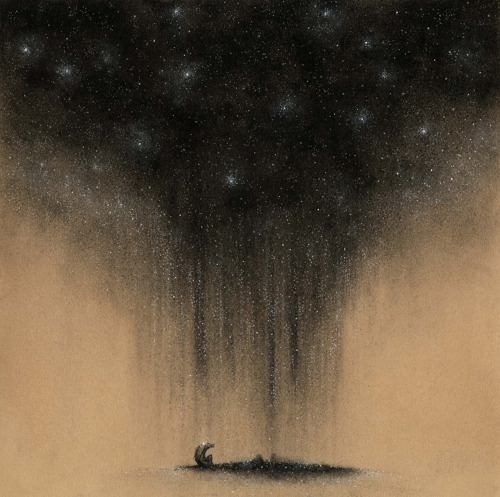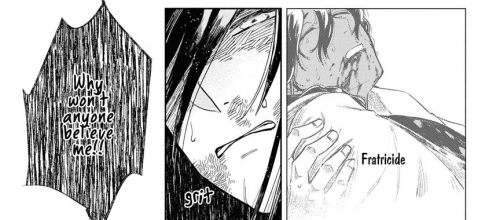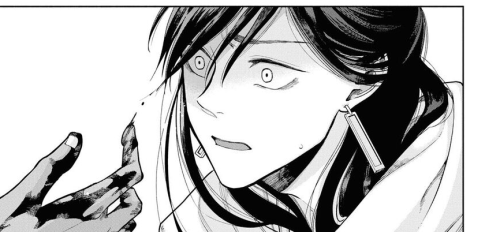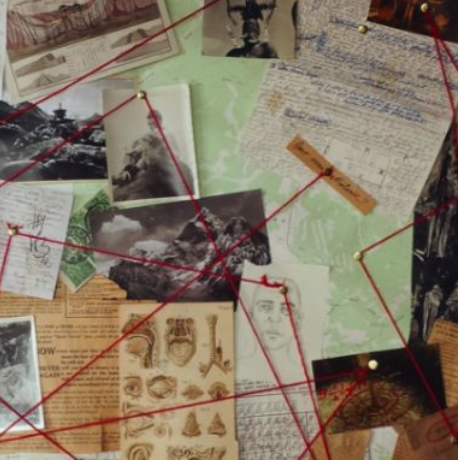#mystery

İstanbul,TR
Waaahhhh!!! YES. YES. YES. SO AMPED.
Sherlock Season 3. Fuck Yes. One of my favorite shows of all time.
News: Sherlock Season 3 Premieres Jan. 19, 2014
full article here:http://www.pbs.org/wgbh/masterpiece/programs/features/news/sherlock-season-3-premieres-jan-19-2014/
Post link
Omfg♠️♥️♠️♥️⚫️♥️♣️♥️♥️
EDIT: I suspect this isn’t actually American Apparel #MatildaPlaid after all. I think it’s a totally different company who happens to have a similar tennis skirt. You can tell because the pleats’ plaid pattern get so narrow on the upper fitted 1/3 part. If you look at my related posts below (or the Matilda hashtags) you’ll see the plaid stays relatively parallel (evenly spaced) from top to bottom.
Post link
Cover for a Lovecraftian book. Painted some weeks ago!
My instagram - https://www.instagram.com/jjcanvas_art/
Artstation - https://www.artstation.com/jjcanvas
Facebook - https://www.facebook.com/JJcanvasArt/
Post link

Minority Report (2002)
Lag Time: 14 years
Dir. Steven Spielberg
Starring: Tom Cruise, Colin Farrell, Samantha Morton, Max von Sydow
Here we have one of Steven Spielberg’s most unique but ignored films from his 2000s filmography: Minority Report. I explore what about it makes this film underrated and what weaknesses have buried it outside our cultural memory.
Spielberg’s 2002 thriller is very clearly in the company of other film adaptations of the works of story-teller Philip K. Dick. A coupling of futuristic vision and plot-twisting action, Minority Report represents the famed author well as it places itself among the higher-quality adaptations. And yet, despite very positive reviews, this film does not attract very fond retrospection. It remains frequently overlooked.
We see elements compete throughout the film. The story, taking place in 2054, is set-up quite well in the exposition. We learn that a special police force called “Pre-crime” has been channeling the clairvoyant powers of three gifted “pre-cogs” to catch murderers before they commit their crimes. While certain mechanics of the plot are directly introduced, there are many moments that reveal Spielberg’s knack for handling details, for setting up characters and situations without drawing attention to the fact that exposition is happening. One thing that makes this director so great is how slyly he wields Chekhov’s gun. The Pre-crime system is set-up incredibly well with an engaging opening scene and rising action. These first forty-five minutes are, however, weighed down by special effects that do not quite seem ready for this film’s demands, and by editing that is not quite fast enough to support action which is nevertheless intriguing and original.
The middle of this movie is its most puzzling part. While in the interest of world-building and resisting the temptation to fill that world with two-dimensional stock characters, the second forty-five minutes are characterized by a weirdness that seems more or less arbitrary. There are moments in the scenes with the botanist (the “inventor” of Pre-crime) and the surgeon (with an interesting but distracting backstory) which wind this movie a little less tightly than other Spielberg works. The vines that attack protagonist John Anderton and the subsequent antidote scene are an instance of the extraneous world-building detours that do not really fit the tone or the plot and only distract the pace. I believe these weird moments and characters are there for that pace though. In distracting the flow, they make up for what would likely be an under-stimulating and slow-paced middle segment. But that rescue job is achieved by bizarre and burdensome intrigue alone.
The plot takes us to events of foreseen homicide, and we seem to be gearing up for an unsatisfying conclusion. A climax nears but it seems contrived and premature, with an unimaginative dramatic theme about thwarting destiny. Perhaps because of what came before, I was expected to be let down as I expected the movie to come its end. But then the plot twists. And it does so quite well. I fell for some story-telling sleight-of-hand, and so the twist was truly unexpected. What evolved in the final act was the most entertaining and successful part of the whole film as plot elements which before seemed under-cooked began to evolve. The story’s concept is engaged to the plot’s extreme benefit in what is really some excellent screenwriting work by Scott Frank and Jon Cohen. The film’s mystery is at its most rich in these final forty-five minutes. They redeem the film, if I do say so myself, and make it well worth the watch.
The screenwriting is not all this well written. There are a few weak lines which mainly serve as your basic dramatic padding. And there are too many puns revolving around eyes. While not a fault of the writers, the screenplay does not always seem to match well with the direction by Spielberg and the editing by Michael Kahn, most evident to me in the scenes in the greenhouse and the surgeon’s apartment. The production gives these scenes (and more) a faster pace than the writing warranted. These issues of pacing, if it is not yet apparent, seem to be the most impressionable issues of the film as I look back on it.
There are moments of the score by John Williams which really standout as mature and individual in his ouerve. At other moments, you can hear that he was rushed into this score from his work on Attack of the Clones. They are stylistic siblings, genetically linked. The design of this film also stands out. The movie, if anything, is the realization of a great effort of cinematic future-building. Beyond the production design, the visual style itself is inspired yet sometimes gets in the way of the film’s clarity with Kamiński’s overlighting and desaturating with the film.
Each of these elements - from writing to visuals and more - supports the overall film well but also each have their moments of weakness which work to unwind the film. In short, this film has taken the back-seat in Spielberg’s filmography, likely due to its inconsistency and an occasional strangeness which can be off-putting for viewers. The weaker scenes reveal the dissonance between art and action. But there are elements which are strange in just the right ways, and where the art and the action merge is the realm of pure mystery and cinematic tension, the latter of which for sure is right in Spielberg’s wheelhouse.
Worth a watch? Definitely. Worth remembering? I can see why it hasn’t been. Worth reviving? I think so. Whether the new television show does that, I have yet to see. But looking back to the film is certainly a fair use of anyone’s time.
Books I’ve read this year:‘One of Us is Lying’ by Karen M. McManus, YA Mystery, 3/5
“I guess we’re almost friends now, or as friendly as you can get when you’re not one hundred percent sure the other person isn’t framing you for murder.”
Post link
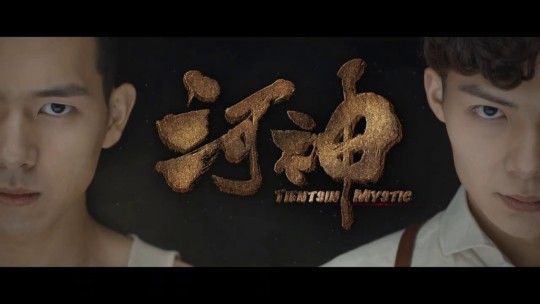
Tientsin Mystic Whump List (2017)
24 Episodes - Watch on: Dramacool
Whumpee: De-you played by Li Xian
De-you (left) works with his friend to investigate crimes. He seems somewhat psychic and sees clues in his mind that are not visible in regular life, he uses smoke to trigger this. It is part of his character that he is very sensitive to certain things which is why smoke has such a strong effect on him. List also refers to the other male lead (right). They both work with the police.
____________________________
Episode 1: (39:00) Purposely inhales smoke, goes in his head, collapses, found on the ground unconscious.
Episode 2: (7:00) Wakes up. (other male lead gets knocked out briefly)
Episode 4: (5:00) Smokes again to trigger going into his head. (27:00) Stupidly kicks something then his foot hurts. (maybe I’m just a wimp but at the end of the episode tw an excessive amount of dead bodies. It’s just too many)
Episode 5: (TW continues up until 9 minutes into the episode.) No whump
Episode 6:(13:00) Smoke cloud triggers him, in his head, snaps out of it coughing then faints. Friend does CPR on him, he wakes up startled, breathing heavily.
Episode 7:(13:00) Enters opium den which does not take long to mess him up, he gets dizzy and disoriented, coughing, he sits down as soon as possible. Is unresponsive for a minute. Forced to run away when he can barely stand, friends help him walk. Out of it. This continues until after they’ve left the opium den.
Episode 8: (23:00) Other male lead is drugged and falls asleep.
Episode 12: (22:00) In an explosion, blocked by rubble. His friend gets stabbed, under a lot of pressure to save him. Breathes in smoke to hallucinate, dizzy.
Episode 15: (3:00) Other male lead gets strangely affected by some flowers. All the characters hallucinate.
Episode 20: (9:00) Attacked, strangled.
Episode 21: (34:00) Other male lead hypnotizes himself, hallucinates, and falls asleep.
**Episode 22: Missing
Episode 23: (3:00) In a trance, almost drowns. Seeing things in his head, wakes up and fights to save himself and his friend. (20:00) Emotional argument with friend.
Episode 24: (24:00) Attacked, waterboarded, saved by friend. (other male lead gets hurt periodically in episode) More fighting. Ending unclear.
Loving these endpapers from a 1931 Nancy Drew mystery, “The Secret of Red Gate Farm.” [PS3537.T817 S437 1931] #endpapers #mystery #nancydrew #librariesofinstagram (at David M. Rubenstein Rare Book & Manuscript Library)
Post link
New movie who dis? Dead on Arrival will be in theaters in 2 weeks! Check out the trailer and new website at www.DOAfilm.com @DOAfilm #Sony .
.
.
#movie #cinema #losangeles #newyork #beverlyhills #manhattan #producer #actor #film #newmovie #thriller #suspense #louisiana #neworleans #batonrouge #detective #mystery #murderontheorientexpress #ncis #ncisla #onset #setlife #amazon #netflix (at Holywood)
Post link
This is an odd entry in the works of le Carre, chronicling the later life of George Smiley. Following the events of Call for the Dead Smiley, no longer with the service, is living a quiet life in London. He is contacted by an old colleague about the a letter she has received from the wife of one of the masters at a venerable Public School (that is, a very old, expensive and exclusive private school) in Dorset, in which she states the fear that her husband is intending to kill her. Smiley calls another master there, the brother of one of his late friends, to find that this woman has indeed been murdered, so travels down to hand the letter over to local detectives and becomes embroiled in the investigation.
So, this is George Smiley as a free agent, outside the Circus. It seems that le Carre may have been toying with setting his character up as a detective - more Father Brown than Sherlock Holmes, although there is something Holmesian in the way the plot unfolds, with Smiley’s vast, if ponderous, intellect processing all the details and building a picture nobody else can see. There is also something of Agatha Christie about the layers of upper-class English manners and class distinctions, in this book those stratifications are precisely the point rather than being, as with Christie, simply the medium on which the puzzle of the plot is hung.
It is clear from early on that this is a blistering attack on the British class system and the snobbish, restrictive forms, rules and structures that protect those at the top - something the author confirms in both the original afterword and a new one, added to this edition in 2010.
In this, le Carre also acknowledges the book’s shortcomings as a thriller (although, by modern terms, I would not class it as a thriller at all, but a mystery) and this is indeed true, perhaps largely as it comes between his excellent debut and The Spy Who Came In from the Cold, which may be the finest spy thriller ever written. The novel is very old-fashioned, some of the supporting cast are fairly flat sketches, and some of the attitudes - especially those toward women - are very much of their time (although that balanced against some very progressive notions) but he already shows his eye for detail and ability to infuse a scene with colour and meaning (even if most of colours are the shades of grey of post-war Britain) and, despite the flaws, this gripped me enough to read in three sittings.
Now, I am very much looking forward re-reading The Spy Who Came In from the Cold.
“Cry Baby Lane (2000)”-


Several years ago, rumors about a lost Nickelodeon movie branded too disturbing for children’s television began popping up around the internet. They all referenced the same plot: A father of conjoined twins was so ashamed of his sons that he hid them away throughout their childhood. (This being a made-for-TV horror movie, naturally one of the twins was evil.)
After one twin got sick the other soon followed, with both boys eventually succumbing to the illness. To keep the town from discovering his secret, the father separated their bodies with a rusty saw and buried the good one at the local cemetery and the evil one at the end of a desolate dirt road called Cry Baby Lane, which also happened to be the title of the rumored film. According to the local undertaker, anyone who ventured down Cry Baby Lane after dark could hear the evil brother crying from beyond the grave.
Cry Baby Lane then jumps to present day (well, present day in 2000), where a group of teens sneaks into the local graveyard in an effort to contact the spirit of the good twin. After holding a seance, they learn that the boys’ father had made a mistake and mixed up the bodies of his children—burying the good son at the end of Cry Baby Lane and the evil one in the cemetery. Meaning those ghostly wails were actually the good twin crying out for help. But the teens realized the error too late: The evil twin had already been summoned and quickly began possessing the local townspeople.
MOVIE OR MYTH?
Parents were appalled that such dark content ever made it onto the family-friendly network, or so the story goes, and after airing the film once the Saturday before Halloween in 2000, Nickelodeon promptly scrubbed it from existence. But with no video evidence of it online for years, some people questioned whether Cry Baby Lane had ever really existed in the first place.
“Okay, so this story sounds completely fake, Nick would NEVER air this on TV,” one Kongregate forum poster said in September 2011. “And why would this be made knowing it’s for kids? This story just sounds too fake …”
While the folklore surrounding the film may not be 100 percent factual, Nickelodeon quickly confirmed that the “lost” Halloween movie was very real, and that it did indeed contain all the rumored twisted elements that have made it into a legend.
Before Cry Baby Lane was a blip in Nick’s primetime schedule, it was nearly a $100 million theatrical release. Peter Lauer, who had previously directed episodes of the Nick shows The Secret World of Alex Mack and The Adventures of Pete & Pete, co-wrote the screenplay with KaBlam! co-creator Robert Mittenthal. Cry Baby Lane, which would eventually spawn urban legends of its own, was inspired by a local ghost story Lauer heard growing up in Ohio. “There was a haunted farmhouse, and if you went up there at midnight, you could hear a baby crying and it’d make your high school girlfriend scared,” he told The Daily.
BIG SCARES ON A SMALL BUDGET:
Even with the now-meager budget, Cry Baby Lane maintained many of the same elements of a much larger picture. In a bid to generate more publicity around the project, Nickelodeon cast Oscar nominee Frank Langella as the local undertaker (a role Lauer had originally wanted Tom Waits to play). All the biggest set pieces from the screenplay were kept intact, and as a result, the crew had no money left to do any extra filming.
Only two scenes from the movie ended up getting cut—one that alluded to skinny dipping and another that depicted an old man’s head fused onto the body of a baby in a cemetery. The story of a father performing amateur surgery on the corpses of his sons, however, made it into the final film.
The truth of what happened after Cry Baby Lane premiered on October 28, 2000 has been muddied over the years. In most retellings, Nickelodeon received an “unprecedented number” of complaints about the film and responded by sealing it away in its vault and acting like the whole thing never happened. But if that version of events is true, Nick has never acknowledged it.
Even Lauer wasn’t aware of any backlash from parents concerned about the potentially scarring effects of the film until The Daily made him aware of the rumors years later. “All I know is that they aired it once,” he told the paper. “I just assumed they didn’t show it again because they didn’t like it! I did it, I thought it failed, and I moved on.”
But the idea that the movie was pulled from airwaves for being too scary for kids isn’t so far-fetched. Though Cry Baby Lane never shows the conjoined twins being sawed apart on screen, it does pair the already-unsettling story with creepy images of writhing worms, broken glass, and animal skulls. This opening sequence, combined with the spooky, empty-eyed victims of possession that appear later, and multiple scenes where a child gets swallowed by a grave, may have made the film slightly more intense than the average episode of Are You Afraid of the Dark?
IMPERFECT TIMING:
Cry Baby Lane premiered at a strange time in internet history: Too early for pirated copies to immediately spring up online yet late enough for it to grow into a web-fueled folktale. The fervor surrounding the film peaked in 2011, when a viral Reddit thread about Cry Baby Lane caught the attention of one user claiming to have the so-called “lost” film recorded on VHS. He later uploaded the tape for the world to view and suddenly the lost movie was lost no longer.
News of the unearthed movie made waves across the web, and instead of staying quiet and waiting for the story to die down, Nickelodeon decided to get in on the hype. That Halloween, Nick aired Cry Baby Lane for the first time in over a decade. Regardless of whether the movie had previously been banned or merely forgotten, the network used the mystery surrounding its origins to their PR advantage.
“We tried to freak people out with it,” a Nick employee who worked at The 90s Are All That (now The Splat), the programming block that resurrected Cry Baby Lane (and who wished to remain anonymous) said of the promotional campaign for the event. “They were creepy and a little glitchy. We were like, ‘This never aired because it was too scary and we’re going to air it now.’”
Cry Baby Lane now makes regular appearances on Nickelodeon’s ‘90s block around Halloween, which likely means Nick hasn’t received enough complaints to warrant locking it back in the vault. And during less spooky times of the year, nostalgic horror fans can find the full movie on YouTube.
The mystery surrounding Cry Baby Lane’s existence may have been solved, but the urban legend of the movie that was “too scary for kids’ TV” persists—even at the network that produced it.
“People who were definitely working at Nickelodeon in 2000, but didn’t necessarily work on [Cry Baby Lane] were like, ‘Yeah I heard about it, I remember it being a thing,’“ the Nick employee says. “It’s sort of like its own legend within the company.”
Debczak, M. (2018, October 12). The Legend of Cry Baby Lane: The Lost Nickelodeon Movie That Was Too Scary for TV. Mental Floss. https://www.mentalfloss.com/article/559167/cry-baby-lane-nickelodeon-movie-too-scary-for-tv









